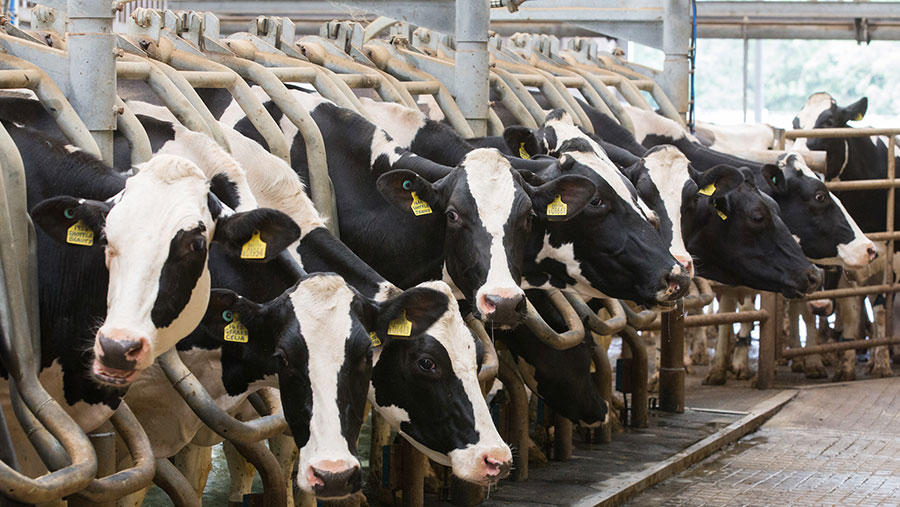5 tips from dairy farmers for reducing costs
 © Tim Scrivener
© Tim Scrivener Dairy producers faced a colossal drop in milk price in 2016, with prices plummeting to less than 12p/litre for some.
Herefordshire dairy producer Andrew Giles admitted it was challenging to make a profit when faced with big price drops of 10p/litre.
However, he urged farmers to focus on what they could control – not the milk price – and said if you’ve found a system that suits your farm and you enjoy what you do, don’t change.
See also: Dairy farm grows thriving milk processing and retail business
“I would warn anyone about big changes, because they can be expensive. If you’ve found what you like doing and what suits your farm, stick to it.”
Mr Giles is a finalist in this year’s National Milk Records Royal Association of British Dairy Farmers’ Gold Cup and milks 550 spring-calving cows in Hay-on-Wye, Powys.
Meanwhile, his sons, William and Richard, milk 730 cows in West Somerset on a contract farming agreement.
Speaking at Livestock Improvement’s Pasture to Profit conference in Birmingham on Thursday (9 November), Andrew and William reflected on the changes they made to their businesses last year.
They each gave their tips on how others could reduce their own cost of production (COP) and looked at what not to scrimp on.
Farm facts
Andrew Giles, Maesllwch Farm, Powys
- Milking 550 spring-calving cows
- 174ha milking platform
- 40ha forage support block
- 150 heifer replacements
- 100ha youngstock and forage support
- Total operating expenses 19.9p/litre
1. Maximise milk output
“Everyone says don’t ‘tank chase’ but it’s rubbish. We remained very focused on maximising output.”
However, he warned yield is relative to costs.
“Every time we put on another 100 litres without chasing it with cake we make more money.”
2. Make the most out of your milk contract
Meet your targets for milk hygiene and solids production and avoid getting penalised.
“You can’t afford to lose money that you won’t get back.”
3. Buy smart
Forward buy as much as you can to save money.
“We have already bought our fertiliser, seed and feed at last year’s prices for next year.”
But he warned not to get carried away when the milk price improves.
“The minute money starts rolling in farmers start to think about buying new tractors. Don’t.”
Farm facts
Will and Richard Giles, Willet Farm, Taunton, Somerset
- Milking 730 cows
- 450ha in total
- 6,200 litres a cow a year or 530kg of milk solids
- Feeding 1.5t a cow a year
- Replacement rate of 18-20%
- Rearing own heifers
4. Don’t cut costs that will affect your future performance
Will said there were three non-negotiable costs you should never cut:
- Re-seeding
- Vaccinations
- Fertiliser and lime
He said cutting either of these was a “false economy” and would impact grass production and cow performance the following year.
5. Focus on grass use to reduce concentrate bills
Use a large proportion of grass and don’t make your system expensive by feeding too much concentrate or silage.
“We are growing about 12.5-13t/ha and using 11.5-12t/ha of that but we would quite like to use more. We just don’t want to compromise yield.”
Weigh heifers and ensure they are meeting targets from grass to avoid having to buffer feed with concentrates and silage.
